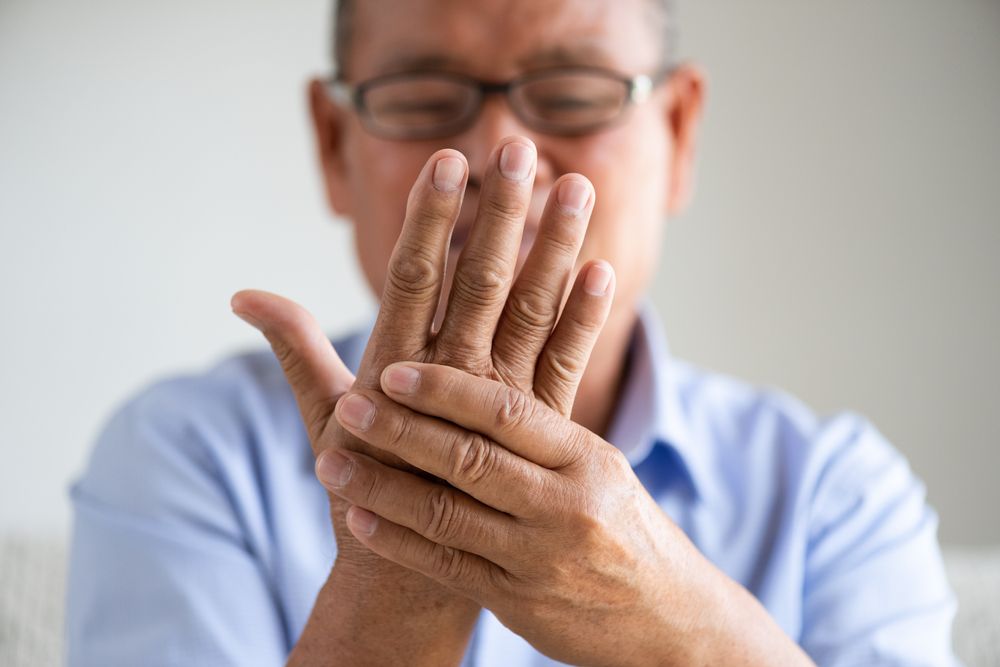The word “Arthritis” was derived from the Greek word “arthron”, which means joint; therefore, “arthritis” means inflamed joint. In modern day medicine, “arthritis” is used to describe a group of distinct diseases, primarily affecting joints of the body, all having related symptoms. These may include pain, swelling, and stiffness of the joints and surrounding areas.
Arthritis can affect one or many joints, suddenly or more gradually over time, depending on the particular type of arthritis one may have. Symptoms may be constant, or may come and go, but generally the effects of arthritis will last for a long time, perhaps for the rest of your life. A diagnosis of arthritis does not mean that you are confined to a life of pain and immobility, however. There are many different treatments that slow the progression of your disease, increase your range of motion and lessen pain. When you visit the Pacific Arthritis Care Center, our physicians will discuss with you the therapeutic options and will institute the treatment which is right for you. It is important to keep a positive outlook throughout your treatment, as this will assist in the healing process.
Types of Arthritis
Arthritis is a condition that attacks the joints and tissues surrounding them, as well as other parts of the body in some types. Each of your joints is built differently – some joints work as a hinge, others swivel, and some do a combination of several different types of motion. But all share a set of common characteristics.
In most joints, two bones meet, end-to-end. They are connected to each other directly by ligaments, which are short fibrous strips of tissue placed at several different points in the joint, at different angles, holding the bones in the correct position during motion. Stability is also provided by the muscles surrounding the joint, which attach to the bone by tendons. The surfaces of the bones in the joint are covered with a thin layer called articular cartilage. This cartilage is smooth and slippery. When the joint bends or twists, the cartilage keeps the movement smooth and fluid. Finally, the joint itself is surrounded by the synovium, which is a thin layer of tissue that produces synovial fluid. This layer, plus thicker ligamentous tissue, forms a “capsule” around the joint, with the fluid inside keeping the joint well-lubricated.
Among the more than 100 types of arthritis, some are more common than others. The four types that are the most prevalent in both the adult and juvenile populations include:
- Osteoarthritis
- Rheumatoid Arthritis
- Gout and Pseudogout
- Ankylosing Spondylitis
If you experience swelling or stiffness in your joints for more than two weeks, you should see your primary care doctor. It is important to find out if you have arthritis or any other condition affecting the musculoskeletal system. Early diagnosis and treatment are essential to minimize pain and disability that these conditions can commonly cause.
Appropriate care usually includes evaluation by a specialist called a Rheumatologist. (What is a Rheumatologist?) The physicians at Pacific Arthritis Care Center are specialize in the diagnosis and medical management of all forms of arthritis and other musculoskeletal disease including the diagnosis and treatment of osteoporosis, chronic forms of neck and back pain, bursitis, and tendonitis. They work with you and your primary care physician to determine the diagnosis and management and treatment plan. When we see you for the first time regarding your symptoms, we will ask questions about when and how the condition started. You will receive a physical examination to check your general health, and then receive a more thorough examination of the joints, muscles and other components of the musculoskeletal system that are bothering you. You may also need other tests to help confirm or rule out a diagnosis and determine the extent and severity of the problem. Such tests may include:
- Lab Tests
- Joint aspiration
- X-rays
- MRI of joints
- Dual Energy X-ray Absorptiometry or DEXA




